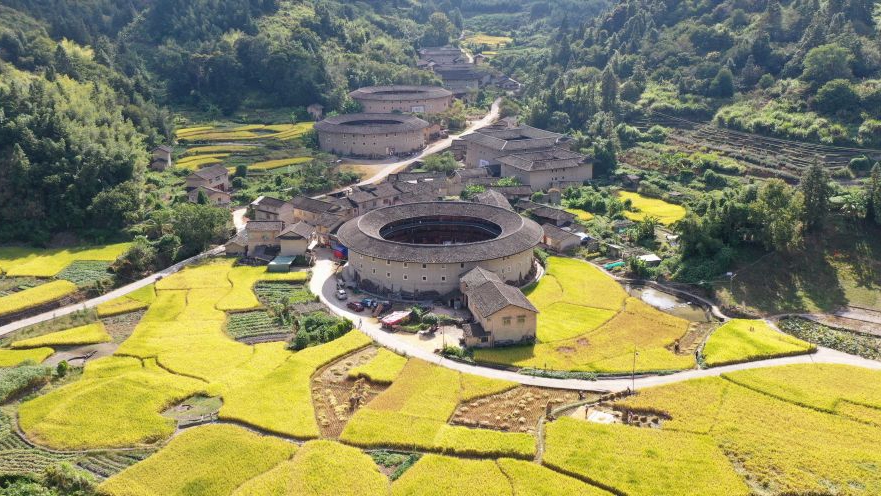Feature: China-aided satellite TV connects remote Ugandan villages to outside world
WAKISO, Uganda, Oct. 14 (Xinhua) -- Access to information in remote villages in Uganda is a daunting task as one has to walk kilometers to a neighboring trading center to find out what is happening in the rest of the country or the world.
Since 2018, China has been changing the situation by connecting remote areas especially schools, health centers, community centers and selected homes to satellite television. The satellite TV project is one of the fruits of the resolutions of the Forum on China-Africa Cooperation Johannesburg Summit held in 2015 in South Africa.
The "Access to Satellite TV for 10,000 African Villages" project in Uganda is implemented by Chinese satellite television, StarTimes.
On the shores of Lake Victoria in the central Ugandan district of Wakiso, rural communities have started reaping benefits from the project that has connected over 18,000 households to the rest of the world through satellite television, according to StarTimes.
At Wagagai Health Center, patients queue as they wait to see doctors. In the waiting area, a television set connected to the satellite has different channels both local and international.
Roy Kyabangi, the health facility administrator, told Xinhua that the television set is important to both the health workers and patients in terms of accessing information, especially during the ongoing COVID-19 pandemic and the Ebola outbreak that the country is facing.
She said some of the patients come from islands where access to information is limited.
"As health workers, it has helped us because since most of the time we spend it here at the health center, we need to get current affairs, what is happening in the world. So we can get that information from our television, StartTimes," Kyabangi said.
"We also get some medical updates, for example, now we have Ebola, if there are some medical people saying something about Ebola, we can get the information as health workers and also patients get current information about health services," she added.
In the health facility neighborhood, there is St. Luke Nkumba Primary School, with a population of about 500 pupils, some crossing to the mainland from a neighboring island. Like the health facility, one can not miss the orange satellite dish fixed on the rooftop of one of the classes.
Rebecca Namusisi, the deputy head teacher of the school told Xinhua that the school received a solar-powered projector and a decoder. Namusisi said the projector and the education programs aired on some of the channels have eased teaching.
"We connected to different channels where we get educative information such as when the president is addressing the nation about Ebola, we get the information," Namusisi said.
She said the projector can also be used for other purposes, for instance, projecting images that would take long to draw on a chalkboard.
"It has added a very great impact on our learners as far as teaching and learning process (is concerned). First, with the teachers, it simplifies your work and with the pupils, they get a clear picture of what you are talking about," Namusisi said.
Doreen Asuru, 16, a pupil of the school, apart from the education programs, can not hide her excitement about the entertainment programs. Asuru said she loves the cultural programs screened including Chinese kung fu.
Some 40km north of the school, in the capital Kampala, there is excitement as pupils of another school, St. Claire Primary School, watch children's programs on the school projector. The school is one of the beneficiaries of the "Access to Satellite TV for 10,000 African Villages" project.
Fred Mpanga, the head teacher of the school said the projector has helped teachers to acquire more knowledge and skills.
Mpanga said besides the education purpose, the children, most of whom come from slum neighborhoods where there are no television sets, get to watch children's entertainment programs.
Wang Jiangnan, Marketing Manager at StarTimes Uganda, said the project is now coming to an end after connecting 900 Ugandan villages in different parts of the country. The project was implemented in two phases. The first phase was in 2018 when 500 villages were connected. In the second phase, which started in August 2021, another 400 villages were connected to satellite television.
Wang is optimistic that the project has and will continue to deepen Uganda-China ties.
"The whole project helps us to strengthen the relationship between China and Uganda. We get closer and closer because of this project," she said.
Photos
Related Stories
Copyright © 2022 People's Daily Online. All Rights Reserved.









